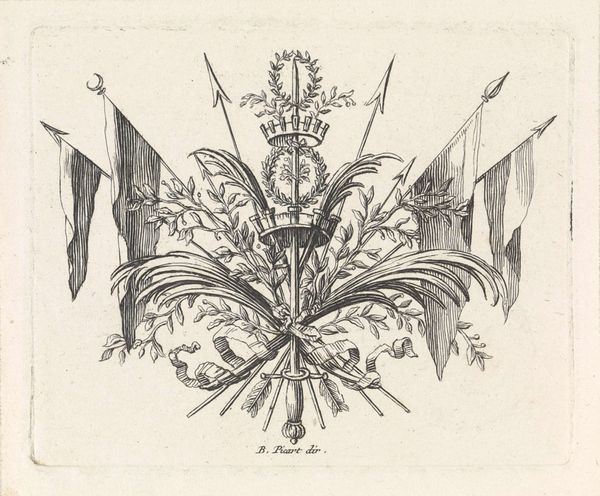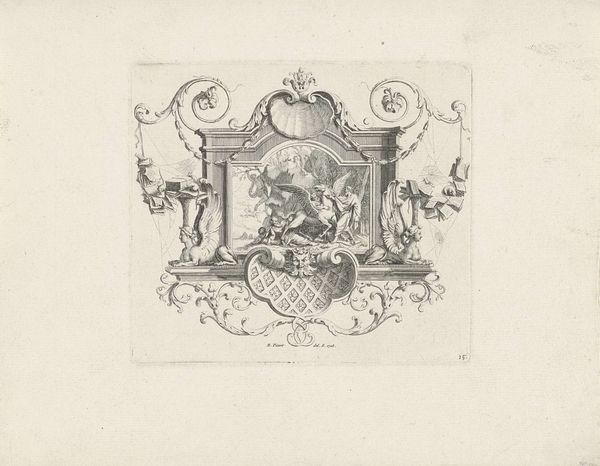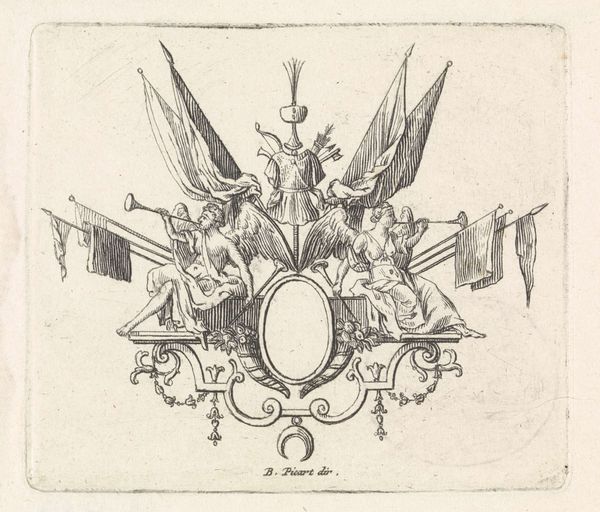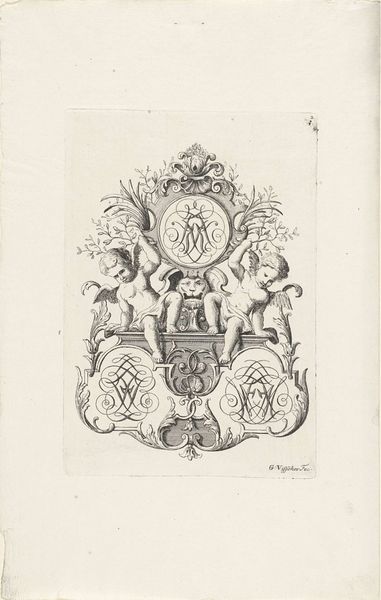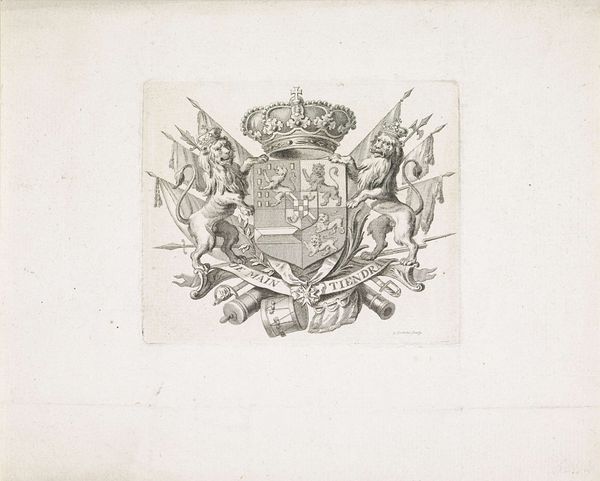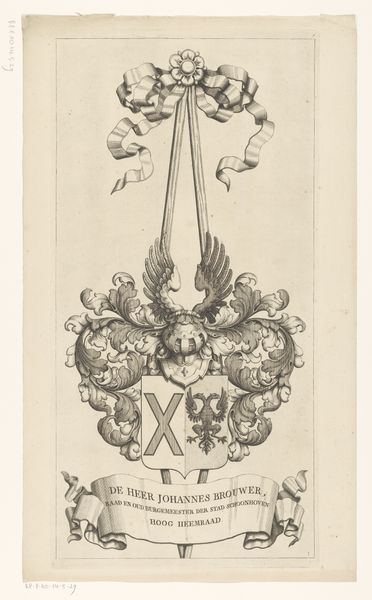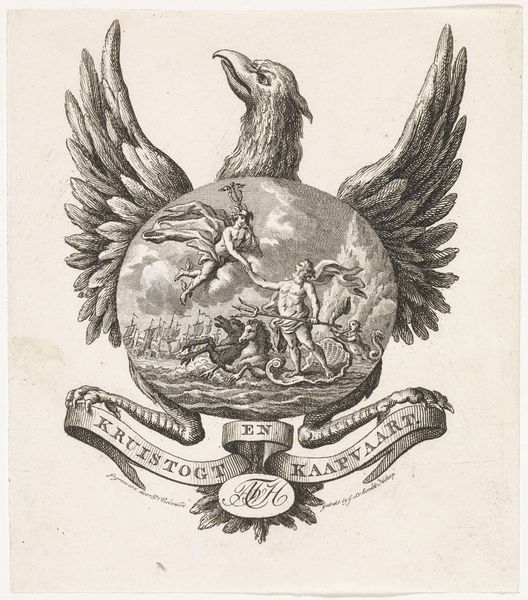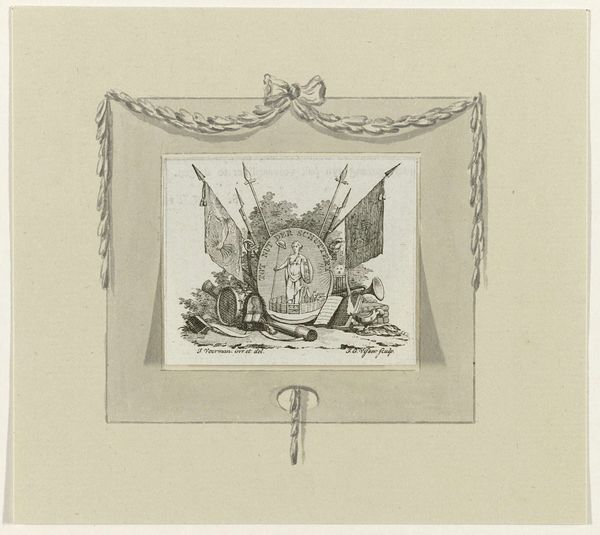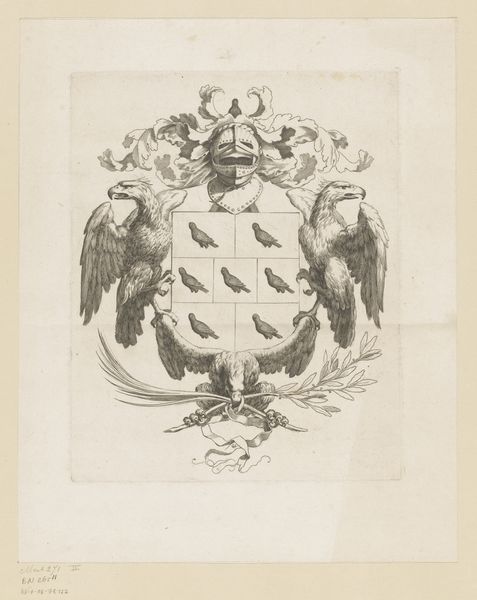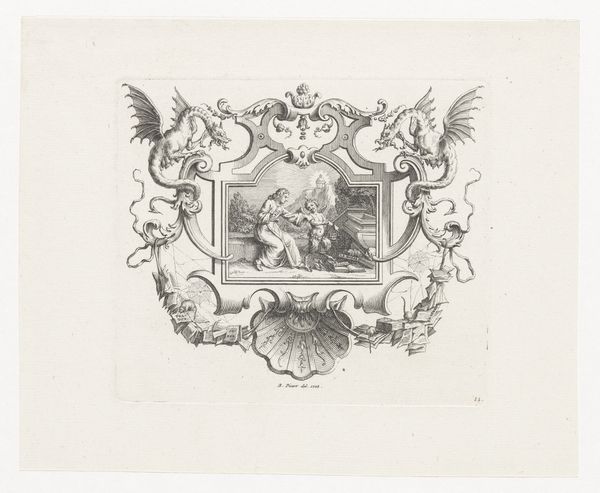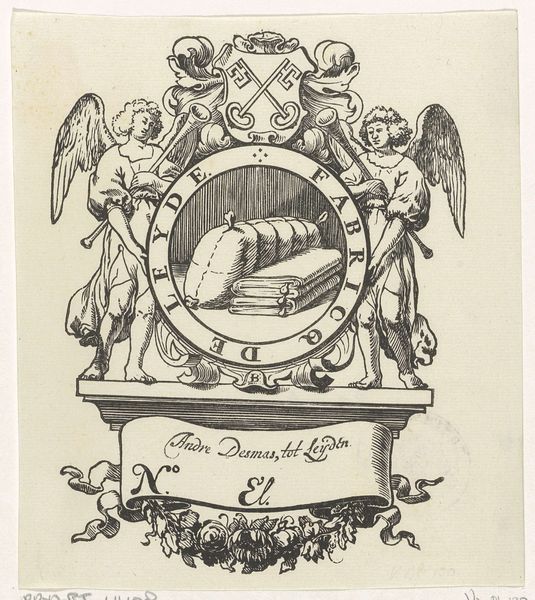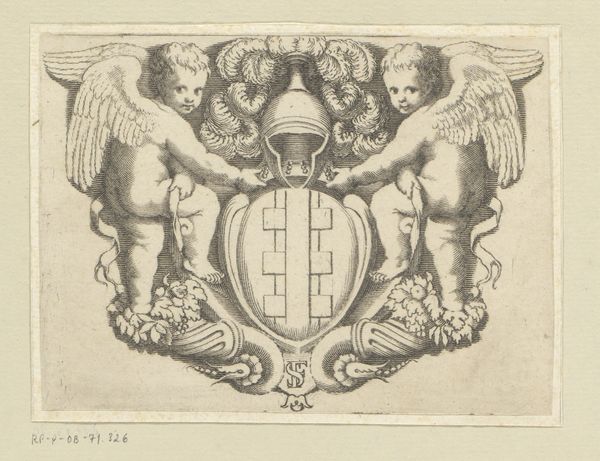
graphic-art, print, engraving
#
graphic-art
#
baroque
# print
#
pen sketch
#
old engraving style
#
decorative-art
#
engraving
Dimensions: height 88 mm, width 113 mm
Copyright: Rijks Museum: Open Domain
Curator: Standing before us is a vignette called "Vignet met een wapentrofee", which translates to "Vignette with a trophy of arms", made sometime between 1683 and 1733. The artist, Bernard Picart, created this engraving, currently held at the Rijksmuseum. What’s your immediate take on it? Editor: Overwhelming. It feels both assertive and fragile. The meticulous engraving technique renders the entire composition in stark contrasts. Curator: Exactly. Engravings like this one were important visual language; symbolic objects speak volumes about the patron's power and values. Look closely, and you'll see the helmets, spears, and shields--they are designed to evoke ideals of might. The garland speaks of honor and virtue, typical baroque symbolic vocabulary. Editor: I'm interested in the labor embedded in it. It's easy to forget that these precise, reproducible images circulated within very specific social conditions. These tools are not simply signifiers, but very concrete expressions of military power. It reveals not just war and power but the means by which they're legitimized through distribution. Curator: Good point. And for that exact reason, I believe the symbolic charge is important. When viewed in context, that decorative style suggests the timeless quality of their influence; it visually aligns itself with ideals of prowess through carefully selected emblems. Editor: And there it is again, the legitimization. It begs the question of where the materials used for both the weaponry and engraving are coming from, whose hands fashioned them, and for what ultimate purpose were they disseminated in the first place? This is a crucial thing to consider when analyzing visual material, what message and whose being propagated. Curator: Indeed. This brings forward that the tension within this relatively small work invites consideration. I’m leaving this discussion with many thoughts about how visual statements construct identity. Editor: Agreed. We get more if we consider that art wasn't isolated in the past, but tied closely with political-economic factors, revealing cultural biases then and now.
Comments
No comments
Be the first to comment and join the conversation on the ultimate creative platform.
